#fluorapatite
Text
Fluorapatite

41 notes
·
View notes
Photo
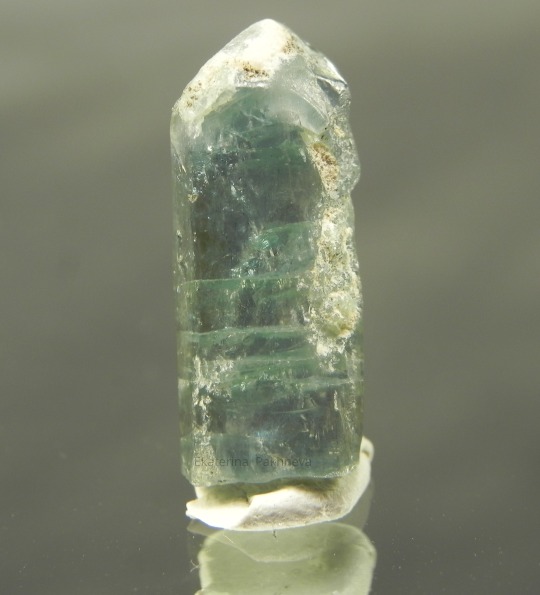
Fluorapatite
Slyudyansk Phlogopite deposit, Slyudyansky district, Irkutsk Region, Russia
Photo: Ekaterina Pakhneva
90 notes
·
View notes
Text
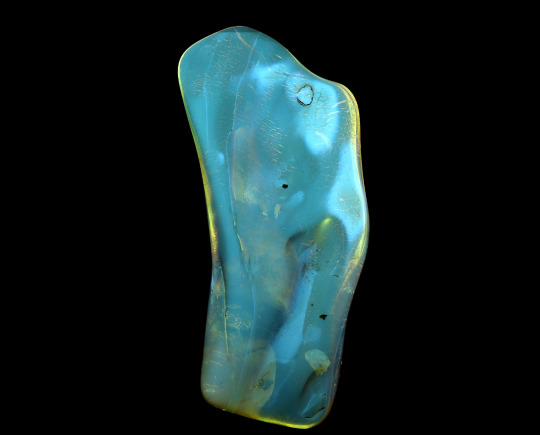
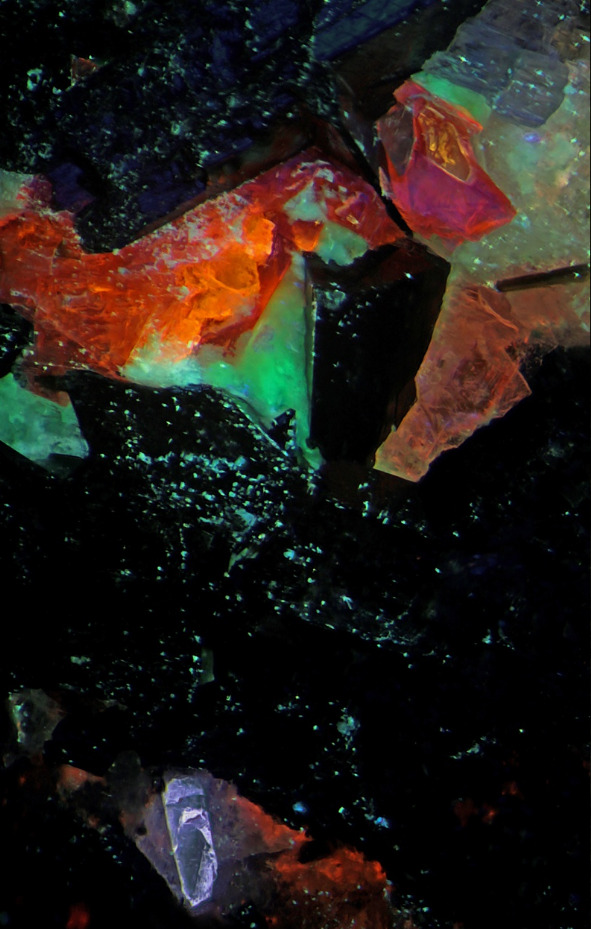
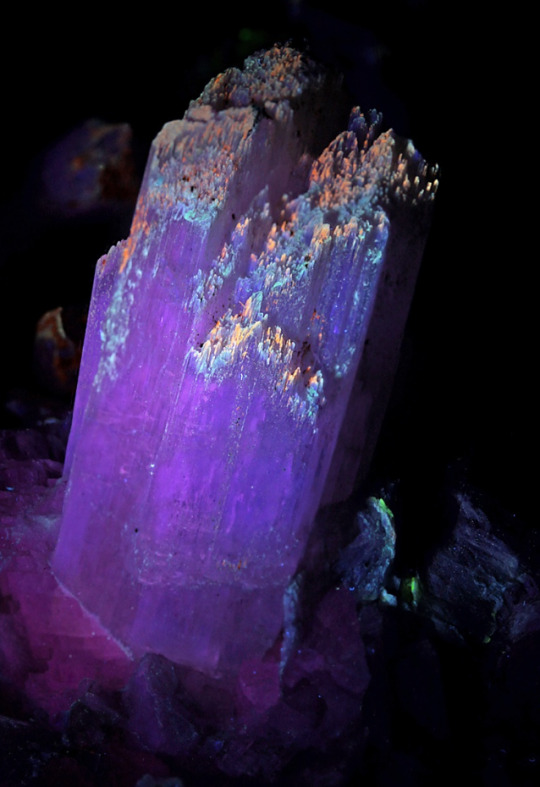



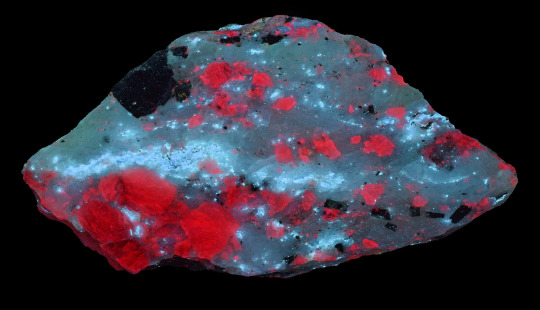





Amber, Lithuania, photo by Simone Conti
Thermonatrite, Villiaumite, fluorapatite, Poudrette Quarry, Canada, photo by Modris Baum
Pectolite, Calcite, Poudrette Quarry, Canada, photo by Modris Baum
Albite, Poudrette Quarry, Canada, photo by Modris Baum
Hackmanite, Calcite, Poudrette Quarry, Canada, photo by Modris Baum
Catapleiite, Calcite, Albite, Gonnardite, Poudrette Quarry, Canada, photo by Modris Baum
Zektzerite, Microcline, Neptunite, Dara-i-Pioz Massif, Tajikistan, photo by Christopher Clemens
Calcite, Graymont Quarry, Canada, photo by Frederic Messier Leroux
Opal, Aragonite, Kopasz Hill Andesite Quarry, Hungary, photo by Simone Conti
Fluorite, Calcite, Trout Brook, Canada, photo by Harold Moritz
Ellingsenite, Villaumite, Aris Quarries, Nambia, photo by Vic Cloete
Fluorapophyllite, Pectolite, Amphibole Supergroup, Poudrette Quarry, Canada, photo by Modris Baum
#mineral#geology#photography#amber#simone conti#thermonatrite#villiaumite#fluorapatite#modris baum#pectolite#calcite#albite#hackmanite#catapleiite#gonnardite#zektzerite#microcline#neptunite#christopher clemens#frederic messier leroux#opal#aragonite#fluorite#harold moritz#ellingsenite#vic cloete#fluorapophyllite#amphibole supergroup
45 notes
·
View notes
Text
Fluorapatite with Chlorite from Pakistan. $60 plus shipping.
https://www.oldearthminerals.com/shop/p/kn1jhnwrod4ucn495jc56t8hmq11vc-8szng
#fluorapatite #apatitecluster #apatitecrystal #healingcrystals #mineralspecimen #yellowcrystals #crystalcommunity #mineralsofig
#Fluorapatite#apatitecrystal#crystals#crystalhealing#minerals#mineralspecimens#mineralspecimen#yellowcrystals#chlorite#apatitecluster
8 notes
·
View notes
Text


Fluorapatite with Muscovite, Astro Gallery NYC
79.4 grams, 1.5 x 1.5 x 2.5 inches
Hunza Valley, Gilgit-Baltistan, Pakistan
1 note
·
View note
Text
While researching for upcoming fish facts I ended up going down a rabbit hole on parrotfish teeth, and I need to share this information in another form than just a fish fact. This stuff is unbelievable. You know the beak of the parrotfish, right? It's formed from the fused teeth of the parrotfish, as an adaptation to have ample biting surface to scrape off and chew on coral, their main food source.

A close-up of the beak of a parrotfish. It has this honeycomb pattern which I find very cool.
Well. To constantly chew on coral, they must have some pretty hard teeth, right? And they indeed do: the teeth of the parrotfish are made up of a mineral called fluorapatite, which forms intricate, chainmail-like woven structures on a microscopic level. Fluorapatite just so happens to be the second hardest biomineral found. This stuff, the parrotfish's teeth? A square inch of the parrotfish's teeth can withstand a whopping 530 TONS OF PRESSURE!!! That's the weight of 88 ELEPHANTS on top of a single square inch!!!! That's crazy, right!!?? The only biomineral that is tougher is the teeth of chitons, that is the single tougher biological thing in the whole world!!! Not only that, but the stiffness and hardness of the teeth increases the more we get closer to the tip (as the mineral fibers get closer and closer to one another), the very tips of the teeth even surpass the chiton teeth in stiffness!!!
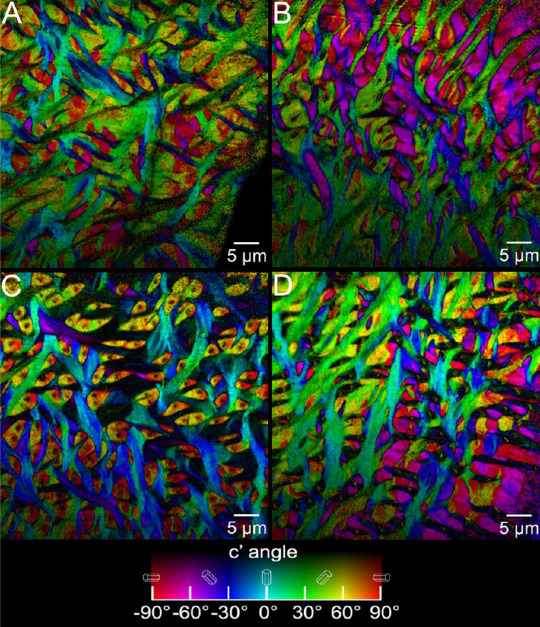
Here are pictures produced through a process called PIC mapping, which shows the size and orientation of crystal fibers at the tip of the teeth.
That feels like it shouldn't be right, no? You'd think that the toughest biominerals in the world would belong to, like, the skull of an animal that rams into rocks or maybe the shell of some animal, not the teeth! The teeth of chitons and parrotfish out of all animals no less! Who would've guessed that the diet of "rock animal" would make the parrotfish require some of the toughest dentition the world has ever seen, huh? That right there is one super good reason why you should never stick your finger in the mouth of one.
Every day I am blown away by how amazing fishes are....
8K notes
·
View notes
Text
Wet Beast Wednesday: parrotfish
Which fish hangs out on a mermaid pirate's shoulder and repeats what she says in a high-pitched voice? The parrotfish, of course. Or at least in fiction they should (certainly will in my D&D world). But even in real life, parrotfish are still pretty interesting.

(Image: a common parrotfish (Scarus psittacus) seen from the side in front of rocks and corals. It is a brightly-colored fish, mainly light blue but with patches and stripes of yellow and pink on the fins. Its mouth is open, revealing what appears to be a beak. End ID)
Parrotfish are fish famous for their mouths and eating habits. There are about 90 species known. While they were historically considered their own taxonomic family, they have since been reclassified a subset of the wrasse family and there is still some debate on how to classify them. Most species are on the smaller size, but a few can get very large. The largest species is the green humphead parrotfish (Bolbometopon muricatum) at 1.5 meters (4.9 ft) and 75 kg (165 lbs) while the smallest species is the bluelip parrotfish (Cryptotomus roseus) reaching 13 cm (5 in). I could not find an average weight for the bluelips. What makes parrotfish really stand out visually is their colors and their mouths. Most species are very brightly colored, with distinct markings and males are usually more brightly colored than females. Their mouths are dominated by what appear to be beaks, which gave them their common name. These beaks are actually made of approximately 1,000 teeth arranged in 15 rows. As the teeth wear out, they drop off and are replaced by the row behind them. The teeth are made of fluorapatite, the second hardest biomineral int the world. To support their hardness, the fluorapatite crystals that make up the teeth are woven together in a structure very similar to chainmail, resulting in very hard teeth that measure in at a 5 on the Mohs scale of hardness. For reference, iron is a 4 and higher numbers are harder. The teeth can also handle 530 tons of pressure. You could put the weight of 200 black rhinos on a tooth and it would be fine. The beaks are powerful enough to bite through rock. Which is what they use it for, but more on that below. Another unusual feature of parrotfish is how they sleep. Some species make their own sleeping bags, which would be adorable if they weren't made of mucus. The mucus is produced using glands in the gills and looks like a transparent bubble. The fish sleeps in the mucus cocoon and when it wakes up, it eats the cocoon. There have been several proposed benefits of the cocoon. It contains chemicals that harm skin parasites while also providing a barrier that keeps new parasites from reaching the fish. It also likely blocks the fish's scent, helping it hide from predators.
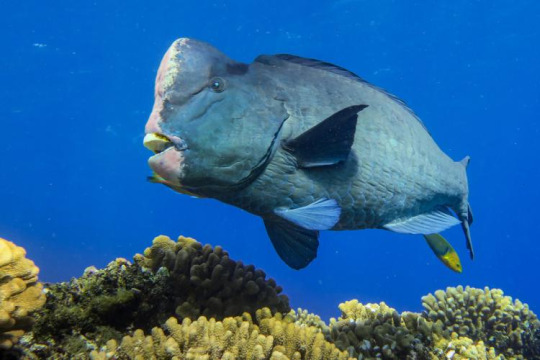
(Image: a green humphead parrotfish (Bolbometopon muricatum) swimming over yellow coral. It is large and mostly a uniform green color, except for the front of its head, which is pink. It has a large, fleshy lump on the top of its head. End ID)
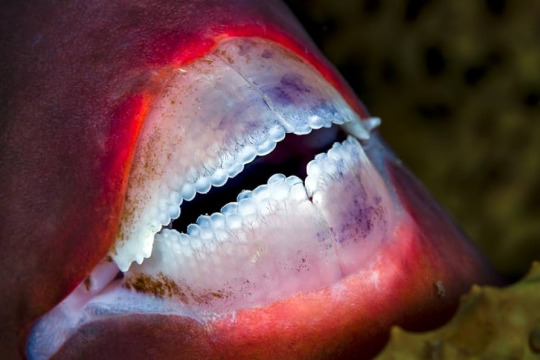
(Image: a close-up of a parrotfish's beak. The top and bottom beaks are divided into two halves, left and right. The beak is bade of small, circular teeth that overlap each other. End ID)
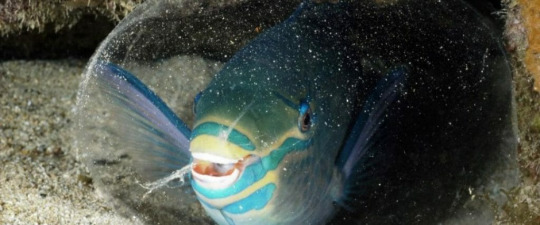
(Image: another common parrotfish seen from the front. It is inside of a mucus cocoon, which appears as a transparent bubble around the fish. Bits of sand dot the cocoon's surface. End ID)
Parrotfish live worldwide, though the majority of species are found in the Indo-Pacific. They live in warm, shallow waters with lots of rocky reefs, especially coral reefs. They use those powerful teeth to eat and what they eat most is algae. There are three main types of feeding behavior: excavating, scraping, and browsing. Excavators bite into rocks to get their food, scrapers crape food off of the surface of the rocks, and browsers go after larger food sources like seagrass and sponges. Some of the larger parrotfish species also make coral a large part of their diet. When they eat, they naturally get rock in their mouths, moreso in excavators. Because their food clings to the rock, spitting the rocks out would deny them food. Instead, parrotfish use pharyngeal teeth set in their throats to grind the rock into sand, which then passes through the digestive tract. When it exists the digestive tract, it is in the form of fine grains of rock. Or to put it another way, parrotfish eat rock and poop sand. A single parrotfish can produce up to 40 kg (88lbs) of sand yearly, and bigger species can produce even more than that. The process of rock being broken down by living things is called bioerosion and parrotfish are one of the most famous sources of bioerosion. The sand they produce can serve as the basis for new growth of coral or other species and helps reinforce nearby islands. In places like Hawai'i, the Caribbean, and the Maldives, it's estimated that up to 80% of the famous white sand is produced by parrotfish and they serve as a major source of incoming earth to support the islands. This makes parrotfish ecosystem engineers. Their eating of algae is also majorly important to their ecosystems. Algae can overgrow and smother delicate ecosystems like coral reefs and seagrass beds and decaying algae draws oxygen out of the water. Parrotfish help the health of their environments by keeping the algae population at healthy levels. Parrotfish also eat seaweeds and sponges that grow much faster than coral and can smother coral reefs. Parrotfish are considered keystone species in many reefs, including the great barrier reef and their population dropping correlates with reduced health of reefs. Damaged reefs tent to have larger parrotfish populations and those populations drop as the reef recovers.

(Image: a group of many parrotfish feeding on coral. They are all the same species and are mostly blue, with yellow heads and stripes on the face. They appear to be biting the the coral. End ID)
Parrotfish are protogynous sequential hermaprodites. This means that all parrotfish are born female and can become male later in life. The transition is usually triggered when there are too many females or not enough males in a location, though in some species any fish that reaches a certain size will become male. Some parrotfish are solitary while others are social. In social species, the social groups consist of a large male and a harem of females that he protects and claims mating rights with. Other males will attempt to fight the male for dominance via headbutting and threat displays and occasionally one of his harem members will become male to challenge him. Males are usually more colorful than females, which they use to woo females, but also puts them at greater risk of predation. If the harem leader dies and is not replaces, one member of the harem will transition to male and replace him. Many species perform courtship dances during nights of the full moon. In non-social species, males will perform displays and fight with each other to attract females. In social species, the dominant male will mate with his harem while smaller males without harems will try to sneakily woo claimed females or sneak in and mate without being noticed. Parrotfish are broadcast spawners. The female releases her eggs into the water and the males releases sperm to fertilize them. The eggs will drift on the current until settling, after which the larvae will hatch. As with most fish species, only a very few of the larvae will reach adulthood.

(Image: a Mediterranean parrotfish (Sparisoma cretense). It is mostly bright red, but with a yellow patch above the tail and a yellow stripe around the eye that runs down to the belly. A large patch behind the eye is blue. End ID)
Thankfully, most parrotfish species are not particularly endangered. The largest threat to them comes from habitat loss as pollution and climate change harms coral reefs. Reintroducing parrotfish to damaged reefs helps them recover. All species are edible, though there is no commercial fishery for them. While parrotfish are capable of delivering powerful bites, there are few reports of humans getting bit. That being said, I found one case where someone had skin on his penis bitten off by a parrotfish. And yes, that link has pictures. Enjoy.

(Image: a blue parrotfish (Scarus coeruleus) looking at the camera. It is a blue fish with darker patches around the eye. Its snout is bulbous and the beak points downward. End ID).
#wet beast wednesday#parrotfish#the smiling grinner#fish#fishblr#fishposting#marine biology#biology#zoology#ecology#animal facts#coral reef#penile trauma#that's a wild tag to have on a post about fish#informative#image described
380 notes
·
View notes
Text

Blue Fluorapatite on green Elbaite Tourmaline. Alto da Cabeca Mine, Brazil
121 notes
·
View notes
Text
List of all SDV and SDV:E (Stardew Valley: Expanded) Giftable Items
Horseradish
Daffodil
Leek
Dandelion
Parsnip
Cave Carrot
Coconut
Cactus
Banana
Sap
Large Egg
Egg
Milk
Large Milk
Green Bean
Cauliflower
Potato
Garlic
Kale
Rhubarb
Melon
Tomato
Morsel
Blueberry
Fiddlehead Fern
Hot Pepper
Wheat
Radish
Red Cabbage
Starfruit
Corn
Rice
Eggplant
Artichoke
Pumpkin
Bokchoy
Yam
Chanterelle
Cranberry
Holly
Beets
Ostrich Egg
Salmonberry
Amouranth
Pale Ale
Hops
Void Egg
Mayonnaise
Duck Mayonnaise
Void Mayonnaise
Clay
Copper Bar
Silver Bar
Gold Bar
Iridium Bar
Refined Quartz
Honey
Pickles
Jam
Beer
Wine
Juice
Clam
Poppy
Copper Ore
Silver Ore
Coal
Gold Ore
Iridium Ore
Wood
Stone
Nautilus Shell
Coral
Summer Shell
Spice Berry
Sea Urchin
Grape
Spring Onion
Strawberry
Sweet Pea
Common Mushroom
Wild Plum
Hazelnut
Blackberry
Winter Root
Crystal Fruit
Snow Yam
Sweet Gem Berry
Crocus
Red Mushroom
Sunflower
Purple Mushroom
Cheese
Goat Cheese
Cloth
Truffle
Truffle Oil
Coffee Bean
Goat Milk
Large Goat Milk
Wool
Duck Egg
Duck Feather
Caviar
Lucky Rabbit’s Foot
Aged Roe
Ancient Fruit
Mead
Tulip
Summer Spangle
Fairy Rose
Blue Jazz
Apple
Green Tea
Apricot
Orange
Peach
Pomegranate
Cherry
Bug Meat
Hardwood
Maple Syrup
Oak Resin
Pine Tar
Slime
Bat Wing
Rusty Blade
Swirl Stone
Solar Essence
Void Essence
Void Pebble
Void Shard
Void Soul
Fiber
Battery
Dinosaur Mayonnaise
Roe
Squid Ink
Tea Leaves
Ginger
Taro Root
Pineapple
Mango
Cinder Shard
Magma Cap
Bone Fragment
Radioactive Ore
Radioactive Bar
Ancient Fiber
Bearberry
Conch
Dried Sand Dollar
Ferngill Primrose
Golden Ocean Flower
Goldenrod
Green Mushroom
Four-Leaf Clover
Monster Fruit
Monster Mushroom
Mushroom Colony
Poison Mushroom
Red Baneberry
Salal Berry
Slime Berry
Rafflesia
Sports Drink
Stamina Capsule
Thistle
Void Root
Winter Star Ross
Dewdrop Berry
Aged Blue Moon Wine
Blue Moon Wine
Aegis Elixir
Armor Elixir
Barbarian Elixir
Gravity Elixir
Haste Exilir
Hero Elixir
Lightning Elixir
Pufferfish
Anchovy
Tuna
Sardine
Bream
Largemouth Bass
Smallmouth Bass
Rainbow Trout
Salmon
Walleye
Perch
Carp
Catfish
Pike
Sunfish
Red Snapper
Herring
Eel
Octopus
Red Mullet
Squid
Seaweed
Green Algae
Seacucumber
Super Seacucumber
Ghost Carp
White Algae
Stone Fish
Crimsonfish
Angler
Icepip
Lava Eel
Legend
Sandfish
Scorpion Carp
Flounder
Midnight Carp
Mutant Carp
Sturgeon
Tiger Trout
Bullhead
Tilapia
Chub
Dorado
Albacore
Shad
Lingcod
Halibut
Lobster
Crayfish
Crab
Cockle
Mussel
Shrimp
Snail
Periwinkle
Oyster
Woodskip
Glacierfish
Void Salmon
Slimejack
Midnight Squid
Spookfish
Blobfish
Stingray
Lionfish
Blue Discus
Baby Lunaloo
Bonefish
Bull Trout
Butterfish
Clownfish
Daggerfish
Dulse Seaweed
Frog
Gemfish
Goldenfish
Grass Carp
King Salmon
Kittyfish
Lunaloo
Meteor Carp
Minnow
Puppyfish
Radioactive Bass
Razor Trout
Seahorse
Sea Sponge
Shiny Lunaloo
Snatcher Worm
Starfish
Torpedo Trout
Undeadfish
Void Eel
Water Grub
Dwarf Scroll 1
Dwarf Scroll 2
Dwarf Scroll 3
Dwarf Scroll 4
Chipped Amphora
Arrowhead
Ancient Doll
Elvish Jewelry
Chewing Stick
Ornamental Fan
Dinosaur Egg
Rare Disc
Ancient Sword
Rusty Spoon
Rusty Spur
Rusty Cog
Chicken Statue
Ancient Seed
Prehistoric Tool
Dried Starfish
Anchor
Glass Shards
Bone Flute
Prehistoric Handaxe
Dwarvish Helm
Dwarf Gadget
Ancient Drum
Golden Mask
Golden Relic
Strange Doll
Strange Doll
Prehistoric Scapula
Prehistoric Tibia
Prehistoric Skull
Skeletal Hand
Prehistoric Rib
Prehistoric Vertebrae
Skeletal Tail
Nautilus Shell
Amphibian Fossil
Palm Fossil
Trilobite
Emerald
Aquamarine
Ruby
Amethyst
Topaz
Jade
Diamond
Prismatic Shard
Quartz
Fire Quartz
Frozen Tear
Earth Crystal
Alamite
Bixite
Baryite
Aerinite
Calcite
Dolomite
Esperite
Fluorapatite
Geminite
Helvite
Jamborite
Jagoite
Kyanite
Lunarite
Malachite
Nepunite
Lemon Stone
Nekoite
Orpiment
Petrified Slime
Thunder Egg
Pyrite
Ocean Stone
Ghost Crystal
Tiger’s Eye
Jasper
Opal
Fire Opal
Celestine
Marble
Sandstone
Granite
Basalt
Limestone
Soapstone
Hematite
Mudstone
Obsidian
Slate
Fairy Stone
Star Shards
Fried Egg
Omelet
Salad
Cheese Cauliflower
Baked Fish
Parsnip Soup
Vegetable Medley
Complete Breakfast
Fried Calimari
Strange Bun
Lucky Lunch
Fried Mushrooms
Pizza
Bean Hotpot
Glazed Yams
Carp Surprise
Hashbrowns
Pancakes
Salmon Dinner
Fish Taco
Crispy Bass
Pepper Poppers
Bread
Tom Kha Soup
Trout Soup
Chocolate Cake
Pink Cake
Rhubarb Pie
Cookies
Spaghetti
Spicy Eel
Sashimi
Maki Roll
Tortilla
Red Plate
Eggplant Parmesan
Rice Pudding
Ice Cream
Bluberry Tart
Autumn’s Bounty
Pumpkin Soup
Super Meal
Cranberry Sauce
Stuffing
Farmer’s Lunch
Survival Burger
Dish’O’The Sea
Miner’s Treat
Roots Platter
Triple Shot Espresso
Seafoam Pudding
Algae Soup
Pale Broth
Plum Pudding
Artichoke Dip
Stir Fry
Roasted Hazelnuts
Pumpkin Pie
Radish Salad
Fruit Salad
Blackberry Cobbler
Cranberry Candy
Bruschetta
Coleslaw
Fiddlehead Risotto
Poppyseed Muffin
Chowder
Fish Stew
Escargot
Lobster Bisque
Maple Bar
Crab Cakes
Shrimp Cocktail
Ginger Ale
Banana Pudding
Mango Sticky Rice
Poi
Tropical Curry
Squid Ink Ravioli
Mushroom Berry Rice
Big Bark Burger
Flower Cookie
Frog Legs
Glazed Butterfish
Grampleton Orange Chicken
Mixed Berry Pie
Baked Berry Oatmeal
Void Delight
Void Salmon Sushi
#Mistakes have likely been made and I will not be fixing them so just reply to the post with any corrections#sdv#stardew#stardew valley#sdv:e#sdve#stardew expanded#stardew valley expanded#giftable items#sdv items#sdv gifts#sdv gifting#long post
7 notes
·
View notes
Text
Fluorapatite

Link to Chart
Picture and Physical Project may look different!
1 - DMC 32 - Dark Blueberry + DMC 3834 - Dark Grape
2 - DMC 3746 - Dark Blue Violet + DMC 28 - Medium Light Eggplant
3 - DMC 340 - Medium Blue Violet
4 - DMC 209 - Dark Lavender + DMC 341 - Light Blue Violet
5 - DMC 210 - Medium Lavender + DMC 3747 - Very Light Blue Violet
6 - DMC 24 - White Lavender
3 notes
·
View notes
Text


Blue Apatite on Calcite.
Apatite is the most common phosphate mineral that comes in a variety of colors but most often is found in green.
Less commonly it can be found in yellow, blue, violet, pink or brown but can also be colourless.
It usually forms in tabular prismatic crystals such as the structure seen in the second photo here.
Apatite is one of the minerals that is often mistaken for being another mineral which is pretty suited to its name which is derived from the Greek word ‘apatáō’ who’s meaning is ‘deceive’
Interestingly Apatite is one of the minerals that is also produced and used by living creatures with Hydroxyapatite for example being a major component of tooth enamel.
Around the mid 20th century it was discovered that Fluorapatite is more acid resistant than Hydroxyapatite and studies showed that residents of towns that had Fluorine added to the drinking water presented with notably decreased instances of dental issues relating to acid erosion of the teeth.
As a phosphate mineral Apatite is commonly used as a component in fertilisers and had even been ground up to form one of the pigments that was used in the Terracotta Warriors and was also used as a pigment in Qing Dynasty enamel and metalware.
Apatite polished up nicely and as such makes for a rather pretty addition to jewellery.
1 note
·
View note
Note

Actinolite Nephrite Adamite Aegerine Afghanite Agate Iris Agate Onyx Sardonyx Agrellite Albite Alunite Amblygonite Analcime Anatase Andalusite Chiastolite Andesine Anglesite Anhydrite Annabergite
Antigorite
Bowenite
Apatite
Apophyllite
Aragonite
Arfvedsonite
Astrophyllite
Atacamite
Austinite
Axinite group:
Ferroaxinite
Magnesioaxinite
Manganaxinite
Tinzenite
Azurite
Baryte
Bastnaesite
Bayldonite
Benitoite
Beryl subgroup:
Aquamarine
Bixbite
Emerald
Goshenite
Golden beryl
Heliodor
Morganite
Beryllonite
Beudantite
Biotite
Boleite
Boracite
Bornite
Brazilianite
Bronzite
Brookite
Brucite
Bustamite
Bytownite
Calcite
Manganocalcite
Caledonite
Cancrinite
Vishnevite
Carletonite
Carnallite
Carnelian
Cassiterite
Cavansite
Celestite
Cerussite
Chabazite
Chalcopyrite
Chambersite
Charlesite
Charoite
Childrenite
Chloromelanite
Chondrodite
Chrysoberyl
Alexandrite
Cymophane
Chromite
Chrysocolla
Chrysoprase
Chrysotile
Cinnabar
Citrine
Clinochlore
Clinohumite
Clinozoisite
Clintonite
Cordierite
Iolite
Corundum
Ruby
Sapphire
Padparadscha
Covellite
Creedite
Cryolite
Cuprite
Danburite
Datolite
Diamond
Bort
Diaspore
Diopside
Dioptase
Dolomite
Dravite
Dumortierite
Elbaite
Emerald
Trapiche emerald Enstatite
Bronzite
Hypersthene
Eosphorite
Epidote
Piemontite
Erythrite
Esperite
Ettringite
Euclase
Eudialyte
Fayalite
Ferroaxinite
Feldspar subgroup:
Andesine
Albite
Anorthite
Anorthoclase
Amazonite
Bytownite
Celsian
Labradorite
Microcline
Moonstone
Orthoclase
Sanidine
Sunstone
Fluorapatite
Fluorapophyllite
Fluorite
Forsterite
Gahnite
Pyralspite
Almandine
Pyrope
Spessartine
Ugrandite
Andradite
Demantoid
Melanite
Topazolite
Grossular
Hessonite
Hydrogrossular
Tsavorite
Uvarovite
Almandine-Pyrope
Rhodolite
rock
diamond coal iron reds stone gold
2 notes
·
View notes
Text
Apatite specimen, multiple crystals. Very good transparence and colour. Historic and world-famous site especially for its magnificent crystals of fluorapatite known since the eighteenth century. The species was named "Chrysolithe d'Espagne" (by Romé de L'Isle) and was also known by the names "Spargelstein" (Werner) and "Esparraguina" (in Spanish) for the resemblance of the crystals with stems of the asparagus.
0 notes
Text
What is the purpose of the fluoride treatment?
The purpose of fluoride treatment extends far beyond merely safeguarding dental health; it serves as a cornerstone in preventive dentistry, offering a multitude of benefits that contribute to overall oral wellness. As an integral component of dental care, fluoride treatments play a pivotal role in strengthening tooth enamel, preventing tooth decay, and minimizing the risk of dental caries. In the serene community of Magnolia, TX, where oral health is of paramount importance, access to professional fluoride treatments ensures residents can maintain optimal dental health under the guidance of experienced dentists in Magnolia.
Strengthening Tooth Enamel: The primary function of fluoride treatment is to fortify tooth enamel, the protective outer layer of the teeth. Tooth enamel is susceptible to erosion and demineralization caused by acids released by oral bacteria and acidic foods and beverages. Fluoride works by remineralizing enamel, replenishing essential minerals such as calcium and phosphate, and forming a robust crystalline structure that resists acid attacks. By strengthening tooth enamel, fluoride treatment helps mitigate the possible risk of enamel erosion, tooth sensitivity, and cavity formation, promoting durable and resilient teeth.
Preventing Tooth Decay: Dental caries, commonly known as tooth decay, is a highly prevalent oral health concern caused by the demineralization of tooth enamel. When not treated, tooth decay can progress, leading to the formation of cavities and potential complications such as dental infections and tooth loss. Fluoride treatment serves as a potent tool in preventing tooth decay by inhibiting the demineralization process and promoting remineralization of weakened enamel. By integrating fluoride treatments into routine dental care, individuals can significantly reduce their susceptibility to cavities and maintain a cavity-free smile.
Minimizing Risk of Dental Caries: In addition to strengthening enamel and preventing tooth decay, fluoride treatments help minimize the risk of dental caries, particularly in individuals with heightened susceptibility to cavities. Children, adolescents, and individuals with certain medical conditions may benefit significantly from regular fluoride applications to protect their developing teeth and safeguard against cavities. By providing a protective barrier against acid attacks and bacterial plaque, fluoride treatment offers long-term benefits in preserving dental health and minimizing the need for extensive restorative interventions.
Enhancing Remineralization: Remineralization is a natural process by which minerals are redeposited into demineralized enamel, restoring its strength and integrity. Fluoride facilitates and accelerates the remineralization process by enticing calcium and phosphate ions to the tooth surface, where they combine with fluoride to form fluorapatite, a highly resistant compound that reinforces enamel. By enhancing remineralization, fluoride treatment not only repairs early signs of tooth decay but also strengthens enamel against future acid challenges, promoting optimal oral health and longevity of the teeth.
Providing Long-term Protection: One of the notable advantages of fluoride treatment is its ability to provide long-term protection against dental caries and enamel erosion; unlike temporary solutions that offer fleeting benefits, such as topical fluoride toothpaste or mouthwash, professional fluoride applications deliver concentrated doses of fluoride that penetrate deep into the enamel, creating a durable barrier against acid attacks. With regular fluoride treatments, individuals can enjoy sustained protection from tooth decay and maintain a healthy smile for years to come, reducing the need for invasive dental procedures and preserving natural tooth structure.
Customized Treatment Plans: Dentists in Magnolia recognize the importance of personalized dental care and tailor fluoride treatment plans to meet the various needs of each patient. Whether for children, adolescents, or adults with specific risk factors for dental caries, fluoride treatments in Magnolia, TX, are administered based on individual oral health assessments and preventive strategies. From in-office fluoride applications to prescription fluoride supplements, dentists in Magnolia offer comprehensive solutions aimed at promoting optimal dental health and minimizing the incidence of tooth decay.
In conclusion, the purpose of fluoride treatment transcends surface-level benefits, encompassing a range of preventive measures aimed at fortifying tooth enamel, preventing tooth decay, and promoting long-term oral health. Through regular fluoride treatments in Magnolia, TX, administered by experienced dentists in Magnolia, individuals can safeguard their smiles against the detrimental effects of acid attacks and bacterial plaque, ensuring lasting protection and vitality of their teeth. By prioritizing preventive dentistry and incorporating fluoride treatment into routine dental care, individuals can enjoy the benefits of a healthy, resilient smile that withstands the test of time.

#dentist near me#cosmetic dentistry#dental fluoride#Fluoride Treatments#dentist magnolia#Tamborello Dentistry
0 notes
Text
"But fluoride is small and gets almost everywhere, even in our enamel. It gets in when we brush our teeth and forces out the hydroxide ions. Sounds aggressive, but it's a good thing. This exchange creates an extremely thin layer on the surface of the teeth of a more solid, more stable mineral called fluorapatite, which can't really be touched by acids."
-Mai Thi Nguyen-Kim, Chemistry for Breakfast (2019)
0 notes
